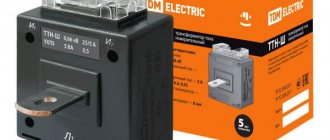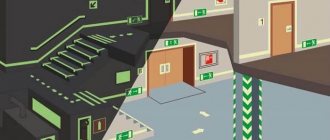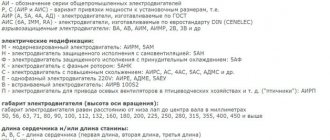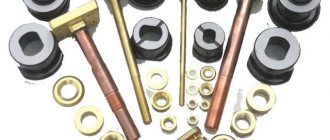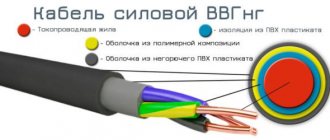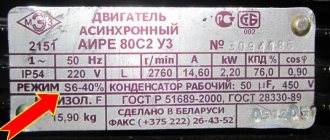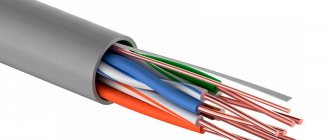AIIS KUE (ASKUE) is an automated information and measurement system for commercial accounting. The presented technology allows you to take and monitor instrument readings in real time. To accomplish this task, a whole range of tools is used, which ensures the capture, encoding, transmission and decoding of information.
Technology is key for energy sales departments, which directly affects the income of the energy supply organization. Systems of this type have been implemented for a long time, but in the CIS countries the coverage of consumers is insignificant. For example, in the Republic of Belarus it is only 16%, in Russia about 18%. Note that the picture varies greatly by region.
Purpose
The main purpose of AIIS KUE is to promptly obtain information regarding consumed electrical energy. The presented system provides direct access to commercial accounting, which involves obtaining critical information. Using the latter allows you to:
- Calculate loss standards, create balances and imbalances, which is an integral part of the tariff system.
- Record the main indicators for which payment is made. In particular, the consumed electricity kWh, as well as the power consumed. The latter is relevant for two-rate, large plants.
- Monitor the performance of the distribution network and identify bottlenecks. In some cases, deal with commercial losses.
Fulfillment of the assignment depends on the correct organization of the system, timely service and the interest of personnel in effective work.
System Description
AIIS KUE is a progressive structure that allows automated collection of data on supplied and consumed electricity. This allows you to obtain reliable information about energy consumption.
It is necessary for resource supplying organizations, business entities, homeowners, and the state. The development of digital technology has made it possible to create and implement AIIS KUE. Let's consider what it is.
An automated system is a set of technical means and software that allow you to provide:
- Remote receipt of information from smart individual metering devices in real time. These are “smart” meters that are easily integrated into an automated accounting system.
- Transfer of received information to your personal account.
- Processing information with pumping into information systems, for example, 1C, GIS housing and communal services and others.
The photo shows smart meters:
The implementation of the complex made it possible to simplify commercial electricity metering. The abbreviation stands for automated information and measurement system for commercial electricity metering. In addition to AIIS KUE, the abbreviation ASKUE is found; it uses similar devices and programs for collecting and processing information. Stands for automated commercial electricity metering system.
Advantages
The advantages of implementing such a system are expressed in the following points:
- Correct and timely metering of electrical energy, which allows you to reduce costs. An electricity user cannot cheat and pay less consumption.
- Reduces the need for additional controller bypasses, and in this profession almost completely. At the same time, more qualified personnel are required to maintain electrical installations.
- Allows you to reduce commercial losses and identify technical ones. It becomes problematic to deceive the system with new AIIS KUE remote shutdown meters and additional security measures.
The main disadvantage of the presented system is the unreliability of modern equipment, as well as the high cost of implementation.
What types of ASKUE systems are there?
ASKUE systems (AIIS KUE) are clearly divided into 2 types: household and commercial. We link all subsequent gradations to the developers of technical solutions - manufacturers.
Scheme of the ASKUE system based on the SEM-3 adder with the ability to poll via Ethernet and GSM networks.
Typical schemes of ASKUE systems (AIIS KUE) based on Mercury meters:
Based on wired connection. This system is mainly used for technical metering of electricity
Based on data transmission via 220/380V contact network (PLC):
Based on wired and wireless connection:
ASKUE of multi-apartment residential buildings.
ASKUE of Industrial Enterprises
This scheme is used at transformer substations and switchboards.
Regulations
Regulation of issues related to electricity metering is determined by local and federal regulations. Some points are regulated by the rules for electrical installations, standard instructions for electricity metering, as well as various circulars.
For the Russian Federation, the main legislative framework is the act “On Ensuring the Uniformity of Measurements” and the Instructions for organizing work on the calculation and justification of standard indicators for technological consumption for electricity transmission. The choice of measuring equipment is regulated by GOST 52323-2005, 7746-2001 and 1983-2001.
Technical support for Enforce ASKUE software:
- Consultations on the operation of the software and the system as a whole.
- Diagnostics and monitoring of system functioning.
- Software update.
- Maintenance of Enforce software DBMS.
Enforce provides technical maintenance of commercial and technical metering systems for electricity and other energy resources.
To provide advice on the performance of the ASKUE system and calculate the cost of the proposal for the necessary work, leave a request on the website or contact us.
Requirements for AIIS KUE
The following requirements are imposed on the information-measuring system:
- Accuracy. The information flow that is generated and transmitted to the control panel of the sales organization must be accurate. This is a guarantee of correct calculation of consumed electrical energy.
- Reliability. The system should not fail, and if any are detected, inform about the problem. This approach allows you to maintain the equipment in good condition.
- Remoteness. AIIS KUE equipment must perform the assigned task at any point, regardless of the remoteness of the data processing unit and the server part.
- Multi-vector. Modern devices and systems must provide not only readings from metering devices, but also other parameters, for example, power.
- Visibility. The information received at the control panel must be clear so that it can be used for the operator’s needs.
Let's move on to the operating principle and equipment that is involved in AIMS KUE.
What are ASKUE and AIIS KUE?
Automated Electricity Monitoring and Accounting Systems (ASCAE) or Automated Information and Measuring Systems for Electricity Monitoring and Accounting (AIIS KUE) are systems designed for remotely taking readings from primary measuring instruments - electric energy meters.
The difference between AIIS KUE and ASKUE is that AIIS KUE is an automated measuring system that is a measuring instrument and must be entered into the State Register as a measuring instrument. ASKUE is an automated system for remote reading of readings from measuring devices - electricity meters, and is used as a technological system for monitoring consumption, and it is not necessary to enter it into the State Register as a measuring instrument. AIIS KUE is also used for commercial settlements between the electricity supplier and the consumer, which imposes additional requirements on it - agreed upon reporting forms, as well as a number of other requirements that are not mandatory in the ASKUE.
In terms of composition, ASKUE and AIIS KUE are, as a rule, identical, with the exception of additional requirements for “top-level” software.
Systems consist of three main elements:
- primary measuring instruments,
- data transmission medium,
- software for processing, storing and displaying data, as well as generating various reports.
Primary measuring instruments include:
- electric energy meters,
- current and voltage transformers,
- controllers or devices that synchronize all devices by time, as well as sources of a single time.
Data transmission media include:
- various interface converters,
- various modems,
- The transmission medium itself is twisted pair, telephone lines, radio channels, power lines (PLC).
Technology for transmitting data over power networks PLC I , developed by Incotex specialists, is intended mainly for collecting reading data from electricity meters in the household sector, i.e. automated collection of data on consumed electricity from household consumers. This functional limitation is due to the fact that the system must have minimal cost and ease of setup and operation. As a result, the system is relatively cheap both in terms of the equipment used and in operation, and therefore has a quick payback.
Data transmission technology via PLC II , developed by Incotex specialists, is intended for both the domestic sector and the small-engine industrial sector. The system is more expensive, but has a greater functional load. The PLC II power line data collection system allows not only to collect data on consumed electricity, but also to obtain almost all the data that is available in a multifunction meter.
The “top-level” software also consists of several main blocks:
- a database where the results obtained are accumulated,
- data processing block, where queries are generated, the received data is processed and transferred to the database,
- user interface with a block for displaying received data,
- report generator or reporting form generation unit.
The feasibility of implementing an automated system (AS) lies in its payback, but sometimes payback is not always the goal; it is more important to receive prompt and reliable information about power consumption or the quality of the supply network. In any case, the implementation of the speaker system is determined by the consumer himself and he himself determines what purpose the implementation of the speaker system pursues.
One of the goals of using automated remote data collection systems is to eliminate the work of “meters” - energy service employees who take readings from measuring instruments - electricity meters.
Principle of operation
To organize an automated system, you need standard equipment, which includes an electronic metering device, a data acquisition device, a twisted pair cable for connecting the modem and the meter, and a server part. In some cases, the meter itself becomes a transmitter of the information flow, since it has a 3G connection. The implementation of ASKUE in multi-storey buildings and enterprises requires the development of design documentation.
The process itself is carried out as follows:
- The server part receives a signal to the USPD about the need to take meter readings.
- The command is transmitted via twisted pair to accounting, after which information is collected and returned.
- The encoded data is transmitted back to the server part, where the information flow is decoded.
- The computer operator uses the received readings for specific needs.
It should be noted that in most cases information is received automatically within a given time interval. Usually every hour, but sometimes more often. The number of updates affects the cost, since it mainly involves data transfer via the 3G network.
ASKUE: principle of operation
Let's take a closer look at ASKUE: how it works, what it consists of, what it is used for.
Automated electrical energy metering system - three-level structure.
- The lower level consists of smart electricity meters (smart meters) with digital outputs. They provide continuous measurement of energy consumption parameters at certain points and transfer of data to the next level without the participation of crawlers and controllers. One dispatcher is sufficient to take readings and service the ASKUE system.
- The middle level represents the method of transmitting information. It consists of data collection and transmission devices that provide round-the-clock polling of metering devices in real time and transmit information to the upper level.
- The top level is the central node for collecting and processing information, which receives data from all collection and transmission devices included in the system. At this level, ASKUE software (personal account) is used, which makes it possible to visualize and analyze the information received, prepare reporting documentation, charge payments according to indications, and display accounting data in the GIS housing and communal services.
The transmission of ASKUE data and communication between system elements is ensured by protocols for sending small amounts of information over wired or wireless channels. A comparison of ASKUE technologies shows that the optimal solution for taking readings both within the city and in rural areas are commercial metering automation systems that use the wireless LPWAN protocol for transmitting small-volume data over long distances, developed for distributed telemetry networks.
In accordance with the three-level structure, the operating principle of ASKUE can be represented in the form of the following algorithm:
- Electricity meters send a signal to a data collection device.
- Data received from metering devices is transmitted to servers for collecting and processing information.
- Information is processed by ASKUE operators using specially developed software.
Data obtained using ASKUE are used to correctly charge consumers for energy supply services.
Equipment service
Maintenance of AIIS KUE is carried out on the basis of internal regulations and instructions. Actions should be implemented periodically, and it is necessary to identify:
- Data testing, periodic monitoring of the accuracy of metering readings. The specialist is required to conduct a series of tests to determine the correct performance of the assigned functions.
- Eliminate defects when they are detected physically or remotely. In most cases, modern systems display errors on their own.
- Regular preventive measures that should be performed at least once a year. This also applies to metering devices that are connected to the system, as well as current transformers.
In modern realities, it is not always possible to carry out such control and maintenance. This is due to the large volume of consumers on the network.
AIIS KUE
- Seal
AIIS "Matrix"
AIMS "Matrix" is an automated information and measuring system based on equipment produced by LLC "Matrix", aimed at solving a wide range of problems:
- remote metering of consumption of various types of resources (electricity, gas, water, heat);
- software and/or remote control of electricity consumption;
- street lighting control.
The system can be used in the private sector (individual cottages, multi-apartment residential buildings, offices), at state or public facilities, at manufacturing enterprises, as well as directly in distribution networks. AIIS "Matrix" significantly increases payment discipline, allows you to quickly identify attempts to steal electricity, as well as determine the level of technical losses. AIIS "Matrix" supports export/import of data in standard formats and is open for interaction with other systems, for example, with an external billing system. The system used is fully automated, does not require a staff of controllers and completely eliminates the possibility of any subjective factors influencing the accounting process.
Scope of application and system architecture
AIIS "Matrix" has a simple three-level structure.
- The lower level consists of electricity meters and other subscriber devices;
- The middle level consists of a router (USPD) and a distributed data network.
- The top level is the Center, which collects, stores and processes data.
The system is capable of accounting for electricity within a separate transformer substation, city, or administrative region. The system can be expanded by simply installing new meters and data control units. USPD allows you to interrogate all devices powered from one 6(10)/0.4 kV transformer substation. The number of meters polled by the USPD should not exceed 2500 pcs. Data from all USPDs is collected by the Data Collection Center. The Center collects and long-term storage of data. The total number of accounting points for which the Center is able to accumulate and process data reaches 1,000,000.
The system supports two-way data exchange between meters and the Center. The USPD exchanges information with the upper level using one of the communication channels: GSM, GPRS, Ethernet. The main communication channel for the exchange of information between the UPD and the lower level is the PLC channel (0.4 kV power line). The scheme for constructing the AIMS “Matrix” is shown in general form in the figure:
Advantages of AIIS "Matrix"
The advantages of AIIS "Matrix" include:
- Confident data exchange when transmitted over the power network. Thanks to the technology of signal relaying by each device and the use of a dual-frequency transmission channel, a reliable, stable communication channel is provided.
- After putting the system into operation, electricity losses are reduced to technical levels. The system provides the ability to balance balances, which is an effective measure to combat electricity theft.
- Availability of built-in controlled power relay. This function allows you to control the subscriber’s load in accordance with the contract and limit the power consumption in case of non-compliance with the terms of the contract. In addition, the system allows you to control the load on lines and equipment during peak hours.
- Monitoring of current network parameters: power, voltage, frequency, current, differential current, with the ability to turn off the built-in power relay when the parameters go beyond the permissible range. This allows you to protect the subscriber’s equipment in the event of an emergency, as well as combat attempts to steal electricity.
- Eliminating the possibility of subscribers colluding with service personnel to conceal real electricity consumption, which is ensured by automated daily collection of information from all metering devices, as well as the impossibility of changing consumption data by either the subscriber or service personnel.
- Multi-tariff operating mode. The meters support up to 6 tariffs. Tariff schedules and week structure are entered into the meter configuration programmatically from the Center, and can be changed during operation.
- Use of cheap and easy to set up and maintain GSM or GPRS channels for information exchange between the USPD and the Center.
- Reliable operation at low temperatures (down to -400C and below). When the temperature drops below -200C, the LCD display turns off, and the data continues to flow to the Information Collection Center.
- Integration with any billing system through the use of a standard MS SQL Server DBMS.
- Ease of system startup and commissioning. The minimum set of equipment to create a system consists of only three components. To launch an electricity metering system into commercial operation, it is enough to install a meter at the subscriber, a data acquisition device at the substation and set up a server in the office of the electric grid company/company manager/chairman of SNT, HOA.
A few words about smart networks
Requirements for AIIS KUE have increased significantly recently. This is reflected in the improvement of systems and the constant search for new, more accurate methods of accounting at low cost. It should be noted that in many European countries the introduction of such automation began much earlier than in the CIS. An extensive network plays a much larger role than taking readings.
This technology makes it possible to regulate in detail the production of electrical energy, control the load on the main equipment, and select the correct modes. In addition, such systems have significantly transformed the relationship between consumers and electricity supply organizations. Everything has become more acceptable and transparent.
